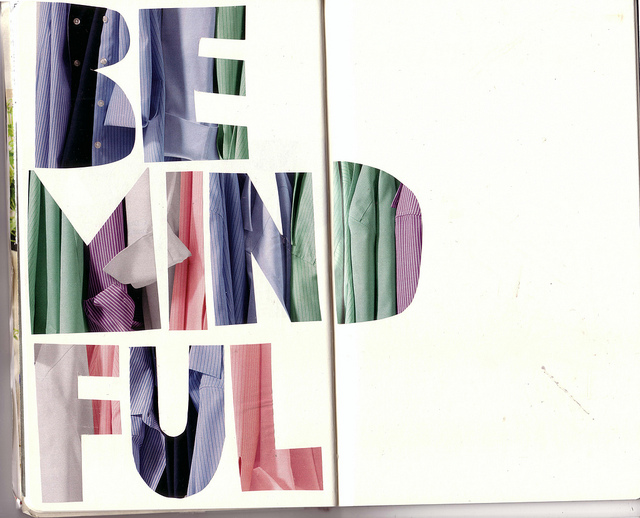Nothing makes me happy.
But don’t get alarmed; I’m not depressed. I get happiness from lots of things: my wife, my dogs, playing music, eating tacos, watching Evil Dead for the 200th time…I love things. I just also love no-things.
Nothing—or nothingness—is all around us, so we might as well learn to love it! It’s everywhere, and it’s in everything.
You may well feel like you’ve heard this sort of thing before: nothing is everything, everything is nothing, less is more—they’re all clichés of spiritual practice. They’ve been around as long as humans have been able to talk, propagated by spiritual teachers, Buddhist monks, yogis, hippies, and high-school art teachers who maybe smelled like weed sometimes.
But just because we’ve heard it all before, that doesn’t mean it’s not true.
Still, nothingness is a hard concept to appreciate. Maybe instead of nothing, it’ll help if we call it space. Not like in outer space—because that’s actually something. (Well, kind of.)
Let’s take your living room, for example. Let’s say you have a couch, a TV, Nintendo, and a bookshelf. You have things. Now, what is in between those things? Air? Dust? Sure, but what’s really there is space. And what is it that arises between when you inhale and when you exhale? There’s a space. And what happens when one thought ends and another thought begins? Nothing. Nothing but a tiny moment of space. We may try to fill it with more thoughts, but it’s already full up—with nothing.
But that doesn’t stop us from trying. We love to fill up space with stuff. We don’t even realize we’re doing it. We fill our to-do lists with stuff, making sure we don’t have any open space in our day. If an open space arises, we fill it: with TV, Facebook, obsessive thinking. Some might even say that addictive or compulsive behaviors—drinking, drugs, overeating, overworking—are about a desperate need to fill the space in our lives.
But it’s not space itself that we’re looking to avoid. It’s what it contains. Space contains stillness, and spending time in stillness feels, to us, like wasting time. We humans are an anxious bunch. We have lost sight of the idea that space is sacred. We’re real wastes of space!
But in stillness, in emptiness, we can find an abundance that’s beyond words. Try to remember a time when you were truly still, not thinking, not doing anything, just resting in your space. It’s probably been a while, but how did that feel?
Can’t remember? Then just imagine. Imagine the freedom of not having anything to worry about. Imagine the relief that could come from just being just as you are, without a care in the world. No regrets about the past. No anxiety about the future. Just the relief of everything in perfect stillness. In this place of stillness, you don’t need anything, you aren’t lacking in any way; you are complete. This sense of completeness, of fullness, is the potential of space. When we embrace this empty space we can be whole.
Embracing it doesn’t mean we have to cease all activity and go live in a cave.
Not at all. We can—and should—still enjoy the things we enjoy, but we must add mindful awareness. We must make a point of asking, again and again: are my thoughts and activities adding to my life and improving my story? Or are they simply using up my space? It’s amazing how often the latter is the case. Stuff comes with burden. Space comes with freedom.
So how do you get started? It all begins, as you might have guessed, with nothing.
Find time every day and do absolutely nothing. Don’t distract yourself with stuff. Don’t fill your space with extra thoughts. Just do your best to do nothing. When you have to do stuff, okay. But in between doing stuff don’t forget to make time for your space. Easier said than done, right?
Give this a shot:
• Take a deep breath in.
• Pause at the top of your inhale.
• Now take a deep breath out.
• Pause at the end of your exhale.
• Notice the space between each breath. Enjoy the pause between your inhale, and your exhale. That pause, that space, exists naturally. Sometimes it’s only a fraction of a second long, but it’s there.
That’s just a tiny example of how we can access the space around us. There are plenty of other practices if you’d like to go deeper. You can give meditation a whirl. You can head to a yoga class. You can practice mindfulness in just about anything you do. It doesn’t so much matter how you access this space, just that you spend some time trying to.
Little by little, we can become more aware of the space that’s all around us. Remember, our space is our sacred right! Our space is freedom! Cultivate it, and enjoy doing nothing!
~
Relephant Read:
Maybe the Only Thing to Do is Nothing.
Author: Miguel Chen
Image: Elizabeth M on Flickr
Editor: Kenni Linden
Copy Editor: Sara Kärpänen







Read 0 comments and reply